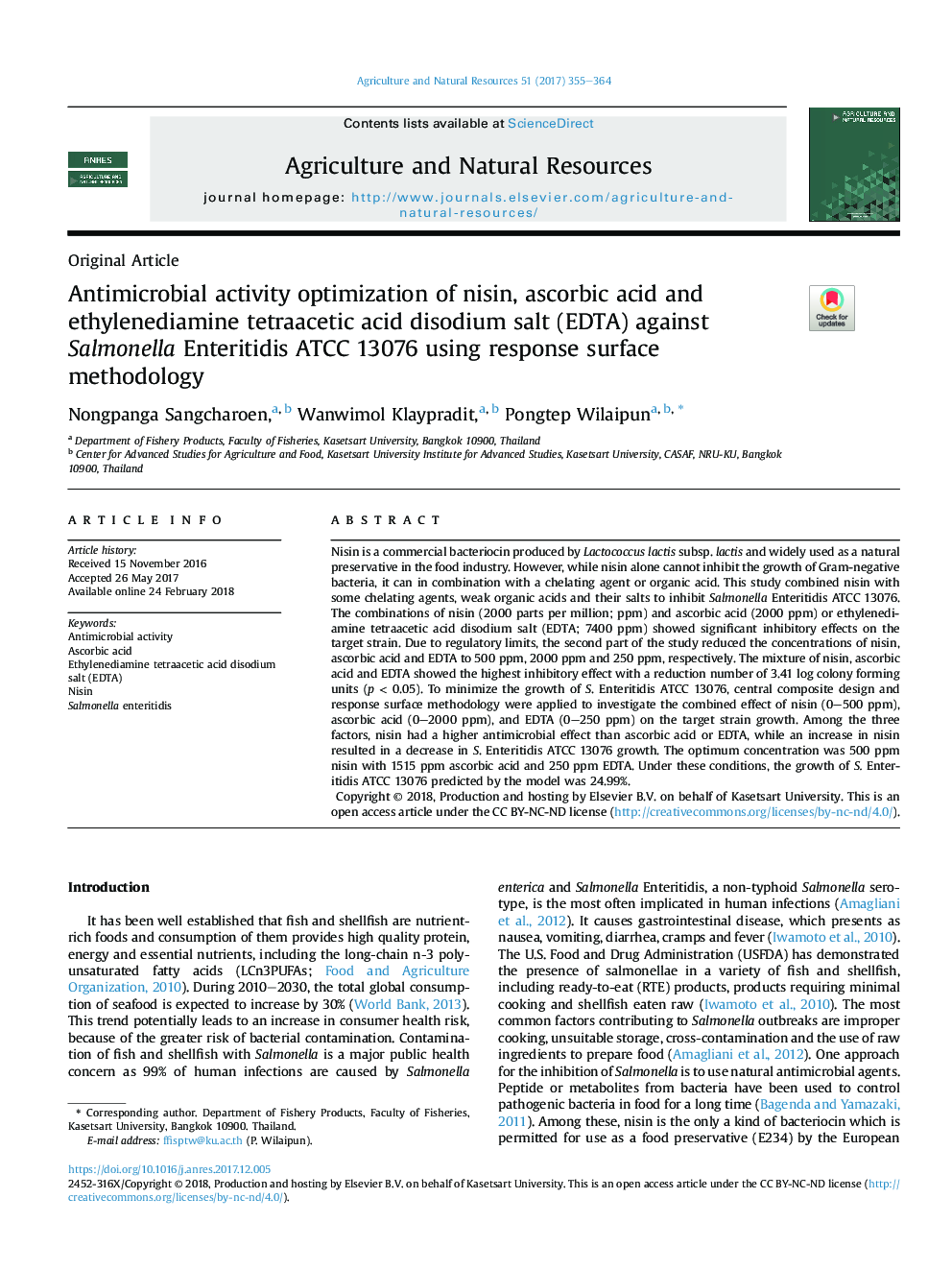| کد مقاله | کد نشریه | سال انتشار | مقاله انگلیسی | نسخه تمام متن |
|---|---|---|---|---|
| 6538047 | 1421007 | 2017 | 10 صفحه PDF | دانلود رایگان |
عنوان انگلیسی مقاله ISI
Antimicrobial activity optimization of nisin, ascorbic acid and ethylenediamine tetraacetic acid disodium salt (EDTA) against Salmonella Enteritidis ATCC 13076 using response surface methodology
دانلود مقاله + سفارش ترجمه
دانلود مقاله ISI انگلیسی
رایگان برای ایرانیان
کلمات کلیدی
موضوعات مرتبط
علوم زیستی و بیوفناوری
علوم کشاورزی و بیولوژیک
جنگلداری
پیش نمایش صفحه اول مقاله

چکیده انگلیسی
Nisin is a commercial bacteriocin produced by Lactococcus lactis subsp. lactis and widely used as a natural preservative in the food industry. However, while nisin alone cannot inhibit the growth of Gram-negative bacteria, it can in combination with a chelating agent or organic acid. This study combined nisin with some chelating agents, weak organic acids and their salts to inhibit Salmonella Enteritidis ATCC 13076. The combinations of nisin (2000 parts per million; ppm) and ascorbic acid (2000 ppm) or ethylenediamine tetraacetic acid disodium salt (EDTA; 7400 ppm) showed significant inhibitory effects on the target strain. Due to regulatory limits, the second part of the study reduced the concentrations of nisin, ascorbic acid and EDTA to 500 ppm, 2000 ppm and 250 ppm, respectively. The mixture of nisin, ascorbic acid and EDTA showed the highest inhibitory effect with a reduction number of 3.41 log colony forming units (p < 0.05). To minimize the growth of S. Enteritidis ATCC 13076, central composite design and response surface methodology were applied to investigate the combined effect of nisin (0-500 ppm), ascorbic acid (0-2000 ppm), and EDTA (0-250 ppm) on the target strain growth. Among the three factors, nisin had a higher antimicrobial effect than ascorbic acid or EDTA, while an increase in nisin resulted in a decrease in S. Enteritidis ATCC 13076 growth. The optimum concentration was 500 ppm nisin with 1515 ppm ascorbic acid and 250 ppm EDTA. Under these conditions, the growth of S. Enteritidis ATCC 13076 predicted by the model was 24.99%.
ناشر
Database: Elsevier - ScienceDirect (ساینس دایرکت)
Journal: Agriculture and Natural Resources - Volume 51, Issue 5, October 2017, Pages 355-364
Journal: Agriculture and Natural Resources - Volume 51, Issue 5, October 2017, Pages 355-364
نویسندگان
Nongpanga Sangcharoen, Wanwimol Klaypradit, Pongtep Wilaipun,